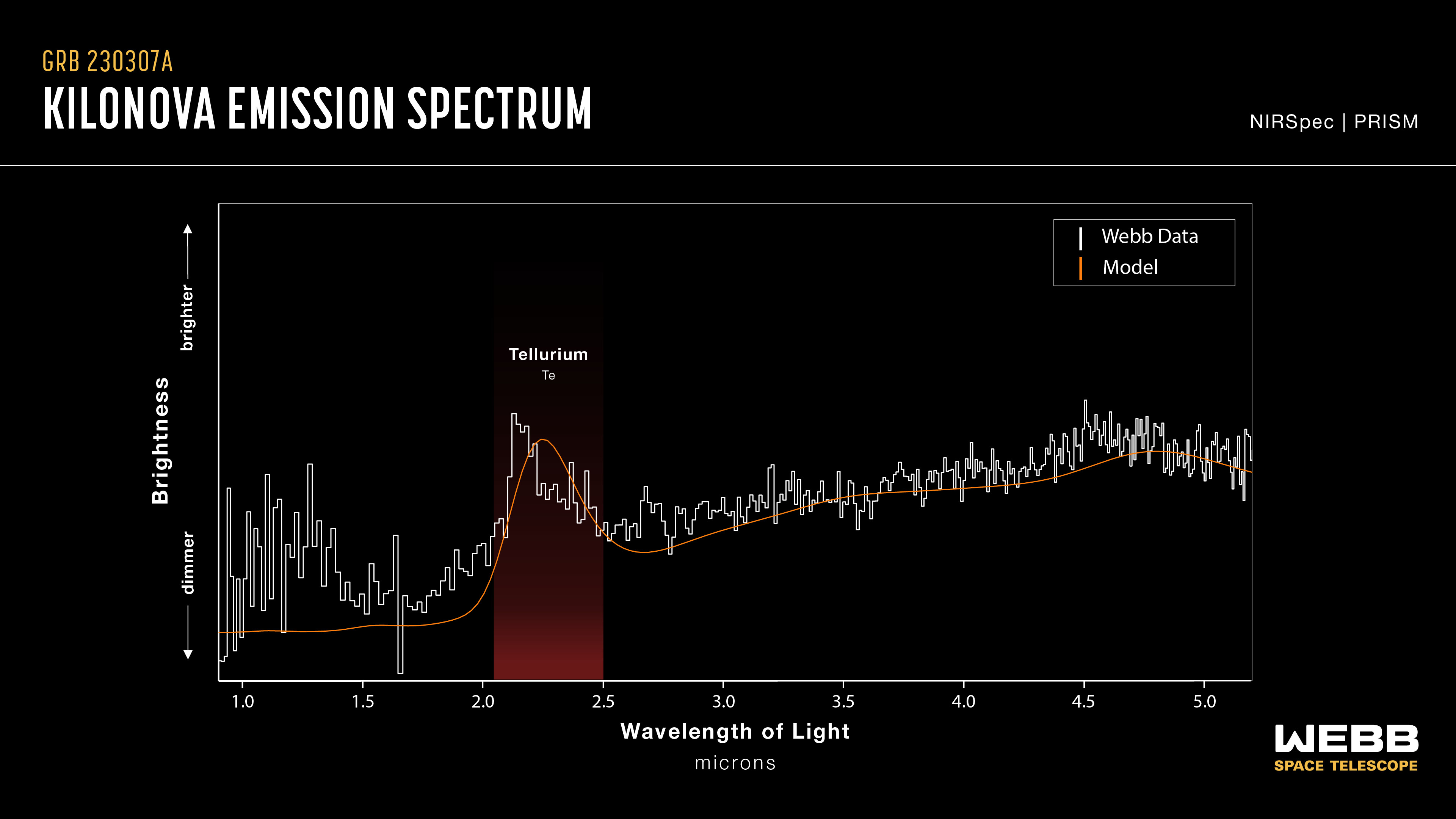GRB 230307A is the second-brightest gamma-ray burst ever observed.
Its study revealed tellurium, an element rarer than platinum on Earth. Other elements close to tellurium in the periodic table - such as iodine, which is necessary for much of life on Earth - are also likely to be present among the material ejected during this explosive phenomenon.
The results published in the journal Nature on October 25, 2023 support the hypothesis that neutron star mergers are one of the main sources of production and expulsion into the interstellar medium of some of the heaviest elements known in the Universe.
___________
Read also the information on the CEA website :
"James Webb : First detection of a 52-proton heavy element from a star merger"
___________
While neutron star mergers have long been theorized as the ideal pressure cookers for creating some of the rarest and heaviest elements known today, astronomers have so far encountered a number of obstacles in obtaining solid evidence for this.
Short gamma-ray bursts (traditionally considered to last less than two seconds) and kilonovae, generally attributed to explosions produced by mergers of compact stars, are extremely rare phenomena, making them difficult to observe.
GRB 230307A : a particularly remarkable leap forward
First detected by NASA’s Fermi Space Telescope on March 7, 2023, GRB 230307A is the brightest gamma-ray burst observed in over 50 years : around 1,000 times brighter than a typical Fermi gamma-ray burst.
It also lasted 200 seconds. This places it firmly in the category of long-duration gamma-ray bursts, which in principle come from the collapse of a massive star (which is not the case here).
A combination of ground- and space-based telescopes enabled scientists to gather a wealth of information on this event, from the moment the explosion was first detected.
After the explosion, an intensive series of observations was carried out to locate the source in the sky and track the evolution of its luminosity : conducted in gamma rays, X-rays, optics, infrared and radio, these observations showed that the optical/infrared counterpart was of low intensity and evolved rapidly over time, changing from blue to red, presenting all the characteristics of a kilonova.
The Webb Telescope’s contribution
The spectrum of the source, obtained with the James Webb telescope, also features broad lines showing that the material is ejected at high speed, with a very clear signature : the presence of tellurium, an element rarer than platinum on Earth.

Webb’s highly sensitive infrared capabilities also helped scientists locate the "cosmic address" of the two neutron stars that caused the kilonova : a spiral galaxy around 120,000 light-years from the area where the merger occurred.
As the duo were gravitationally linked, the two stars were propelled together into space on two separate occasions :
- when one of the two stars exploded as a supernova and became a neutron star,
- and when the other followed suit.
This binary system was thus expelled from its original galaxy, and travelled a distance equivalent to the diameter of the Milky Way, before merging several hundred million years later.

Scientists expect to find more kilonovae in the future, thanks in particular to the ever-increasing possibilities of combining space and ground-based telescopes, along with gravitational wave detectors, to study variable phenomena in the Universe.
Starting in spring 2024, their resources will be enhanced by the Chinese-French SVOM space mission, dedicated to the detection, localization and study of gamma-ray bursts.
Reference
These results were published in Nature on October 25, 2023 under the title : Heavy element production in a compact object merger observed by JWST, Levan et al.
